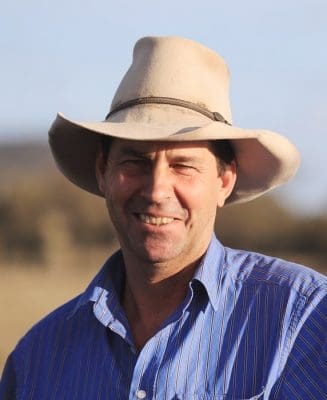CATTLE producers in many key livestock regions are grappling with drought and serious threats to the viability of their businesses.

CCA president Howard Smith
Producers are working to navigate these challenges and industry representatives are acutely aware of how critical the immediate situation is.
At a national level, led by the Cattle Council of Australia, we must also keep our eyes on the long-term sustainability of Australia’s beef cattle industry beyond current seasonal difficulties.
When seasonal pressure is severe, the overarching strategies which reflect our vision for Australia’s red meat industries are more pertinent than ever. Whatever the season, our fundamental goals remain the same and our path towards them remains clear.
No cattle producer is an island and nor is any one commodity isolated from others, especially in the red meat game. This is reflected nationally where Cattle Council collaborates with other red meat industry organisations to achieve common objectives.
Led by the Red Meat Advisory Council and guided by RMAC’s Meat Industry Strategic Plan, producers and other red meat industry stakeholders work together effectively, because boosting our productivity and profitability is a challenge for the whole supply chain.
Industry collaboration reflects the many ways our supply chains are increasingly integrated and innovating to maximise our competitiveness. What’s more, fundamental MISP objectives like improved market access, reduced red tape and prioritising relevant research and development are, in light of the drought, more important than ever. That’s why the conclusion of the Indonesia-Australia Comprehensive Economic Partnership Agreement (IA-CEPA) in the past week is so timely.
When the next drought strikes, the challenge is to be better prepared and in a stronger position, both on-farm and throughout the supply chain, to minimise the damage and the time it takes to get back on track. Beyond the farm gate, this is aided by growing feedlot capacity, a modern processing sector, a resilient live export trade and improved market access for Australian beef.
In recent months, diminished feed stocks have meant large numbers of breeders and young females have been slaughtered. Female cattle will make up a significant portion of what MLA estimates will be 7.8 million cattle slaughtered this year.
These volumes don’t just hinder our future breeding capacity, they also put pressure on the market and prices. This pressure, in turn, tests the ability of our supply chains to absorb the supply distortions associated with drought and unequivocally confirms the importance of market diversity.
Indeed, while cattle prices were driven down in autumn due to increased supply, further reductions were prevented because of strong export demand. With that reasonable floor in the market, the industry has avoided even more pressure on profit margins in the supply chain.
Competition for scarce fodder hasn’t helped budgets, but the lack of paddock feed or high prices for hay is no excuse for malnourished cattle or compromised welfare. Producers are not immune to the close welfare scrutiny which is applied to the treatment of livestock beyond the farm gate.
The Australian community is proud of the clean, green produce generated by Australia’s farmers and the public support we enjoy has been confirmed in recent weeks as national attention has turned to the drought.
While charity initiatives have received extraordinary support, hopefully consumers know the best way to support livestock producers, no matter the seasonal situation, is to ensure quality Australian red meat is on their dinner plates on a regular basis.
When that is the case, we know the role we play in Australia in terms of our national identity, regional communities, food security and the economy is truly valued.
For producers, what spring will deliver remains unknown. But we remain hopeful that the fortunes of those enduring the dry will change sooner rather than later.
Regardless, producers can be confident that we are building a better future for the beef industry, so that we are resilient when times are tough and able to thrive when the rains return.
* Howard Smith is the president of the Cattle Council of Australia and a beef cattle producer from Rolleston in Central Queensland.
